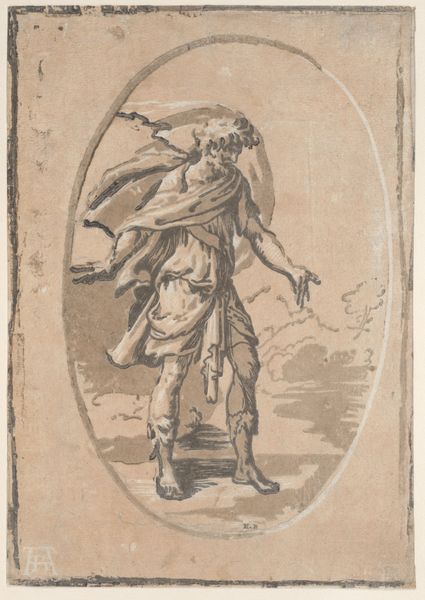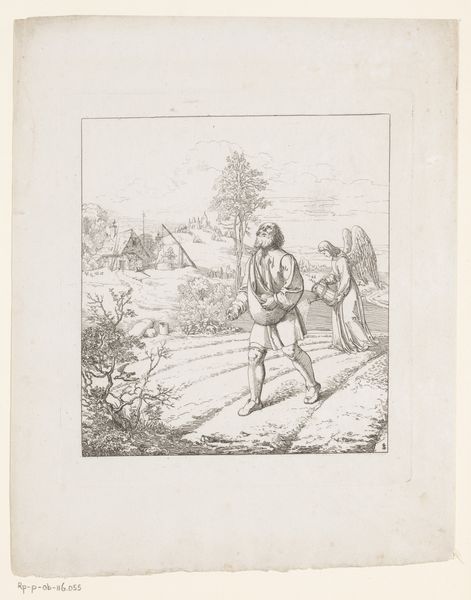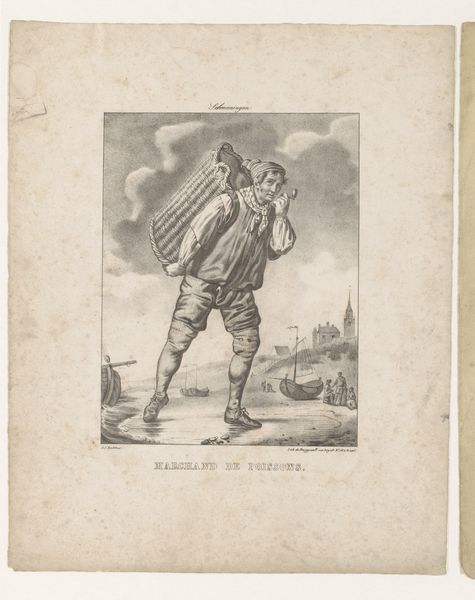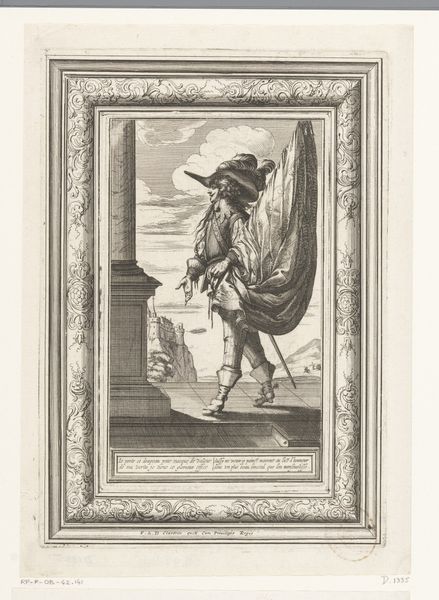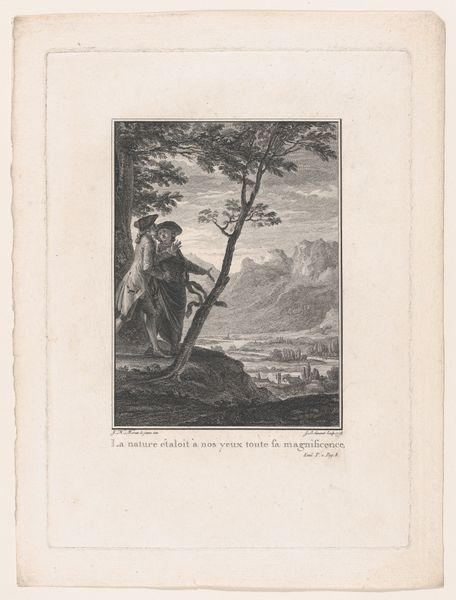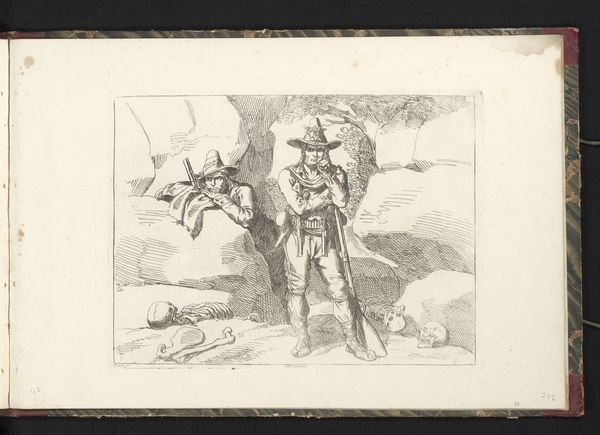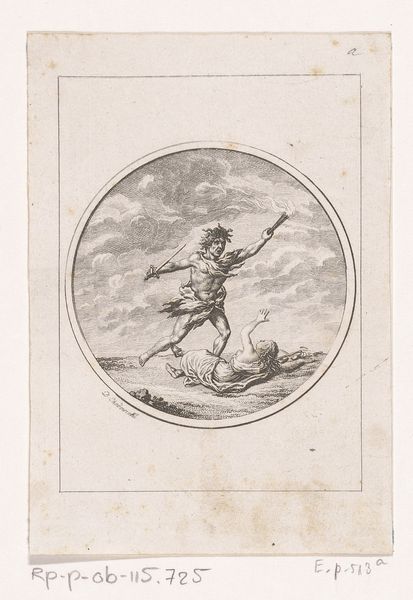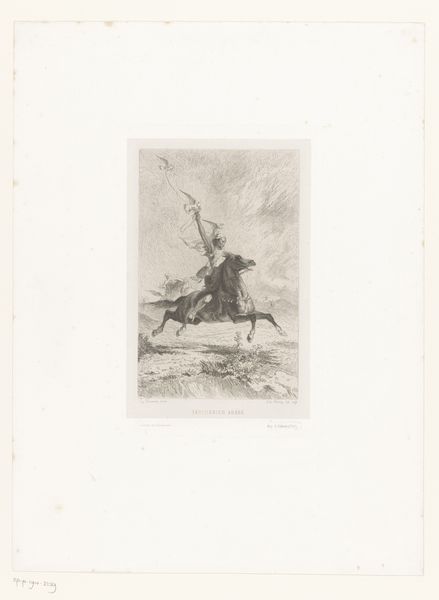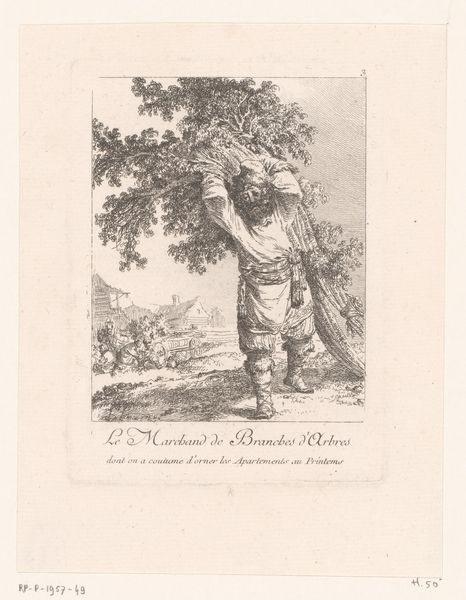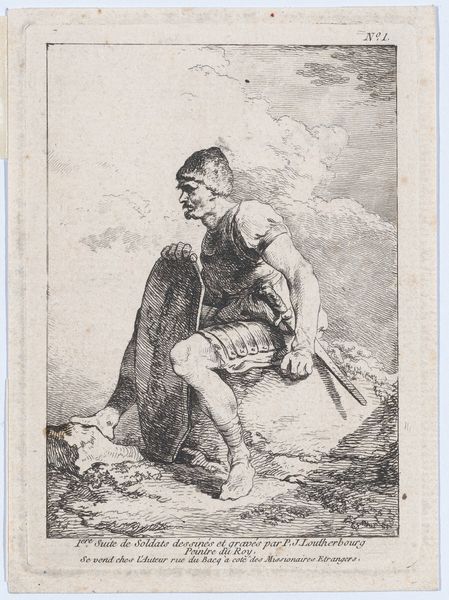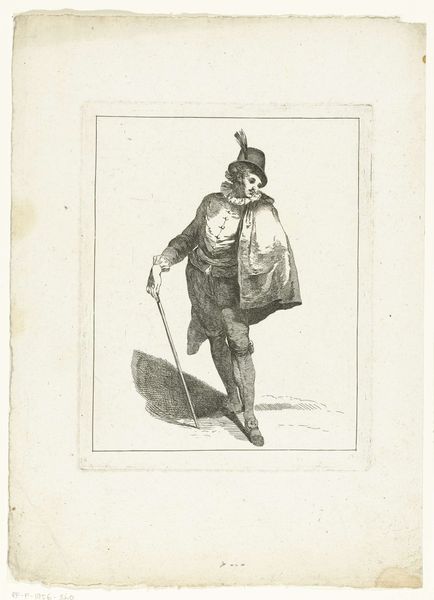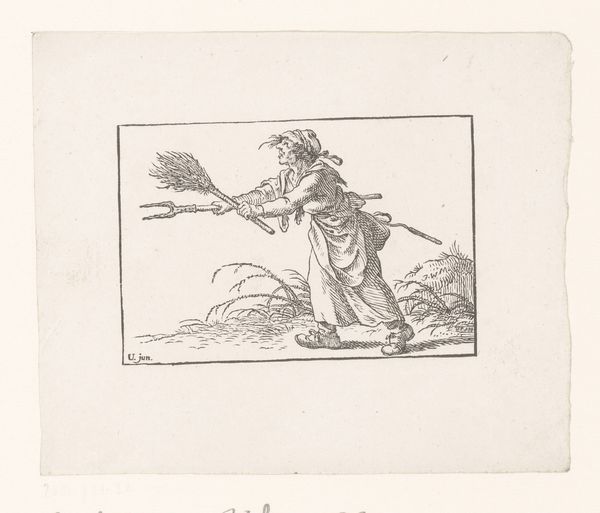
drawing, paper, pen
#
portrait
#
drawing
#
narrative-art
#
landscape
#
figuration
#
paper
#
romanticism
#
line
#
pen
#
history-painting
Dimensions: height 83 mm, width 61 mm
Copyright: Rijks Museum: Open Domain
Curator: Welcome. We’re standing before a pen drawing by Joannes Bemme, made in 1802. It's titled "Studieblad met soldaten," or "Study Sheet with Soldiers." It's currently held at the Rijksmuseum. Editor: My first impression is that it feels incredibly immediate, like a snapshot of a very specific moment. There’s an energy in the lines, a sense of urgency or drama… Curator: Indeed. If we examine the composition more closely, we notice two soldiers prominently positioned. The lines are rather spare, economic even, relying more on suggestion than on complete delineation, particularly regarding background details, which evokes Romantic sensibilities of landscape and history painting. Observe, as well, the series of studies located toward the top of the composition—clearly studies done in preparation. Editor: To me, those figures overhead seem like echoes, fragments of a collective consciousness. I see themes of power and control embedded in its historical context. Think about what soldiers represent, both then and now—force, oppression, a state-sanctioned license to enact violence. Are we meant to sympathize with these men, or view them critically? Curator: One might argue that these historical connotations take us away from the actual lines themselves, or how those lines construct shapes and forms to constitute recognizable subject matter. The line work seems deliberately executed, perhaps illustrative in nature. It's suggestive of conflict or perhaps, preparation. I believe its value lies not just in political readings, but in its meticulous construction of figurative elements. Editor: But aren’t the lines *already* embedded with that history, carrying within them the weight of political ideologies and lived experiences? Surely we can agree on the cultural significance, beyond pure form, in considering not just *what* is rendered but *how* it resonates through time. Curator: I suppose you’ve nudged me into a compromise. Editor: It's inevitable! By examining artwork like this, by engaging with its lines, form, and sociopolitical implications, we sharpen our understanding of both the past and present, perhaps offering possibilities for envisioning alternative futures.
Comments
No comments
Be the first to comment and join the conversation on the ultimate creative platform.
